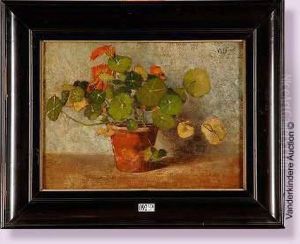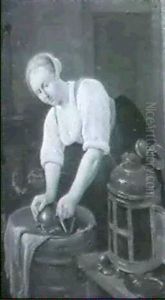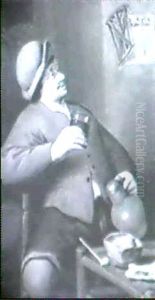Willem Justus Ising Paintings
Willem Justus Ising was a Dutch artist known for his contributions to painting and graphic art. Born on November 1, 1885, in Amsterdam, Netherlands, Ising grew up during a time of great artistic evolution in Europe. His early years coincided with the tail end of the Impressionist movement and the emergence of Modernist art forms.
Ising's artistic journey began at a relatively young age, and he was known to have a keen interest in the visual arts. Although detailed records of his education and training may not be widely documented, like many artists of his time, he would have been influenced by the rich artistic heritage of the Netherlands, home to the likes of Rembrandt and Vermeer.
Throughout his career, Willem Justus Ising developed a distinctive style that resonated with the aesthetic shifts of the early 20th century. His work, however, has not been as extensively documented or studied as some of his contemporaries. This relative obscurity may be due to a variety of factors, including the dominance of other art movements of the time, such as Expressionism and Cubism, which overshadowed the work of more traditional or less radical artists.
Despite this, Ising's contributions to his local art scene were significant, and he was known to have participated in various exhibitions and artistic circles. His graphic art, in particular, showcased his skill in composition and his ability to capture the nuances of light and shadow, a testament to the enduring influence of Dutch artistic traditions.
Willem Justus Ising lived through two World Wars, periods that were challenging for artists, many of whom struggled with the implications of the conflicts on a personal and professional level. It is likely that these events impacted his work and may have informed some of his subject matter or stylistic choices.
Ising's work throughout his life remained true to his vision, and he continued to produce art until the latter stages of his life. He passed away on May 29, 1977, in The Hague, Netherlands. While he may not have achieved the same level of fame as some of his peers, Willem Justus Ising's legacy is preserved in the pieces he left behind, which continue to be appreciated by art enthusiasts and collectors.


